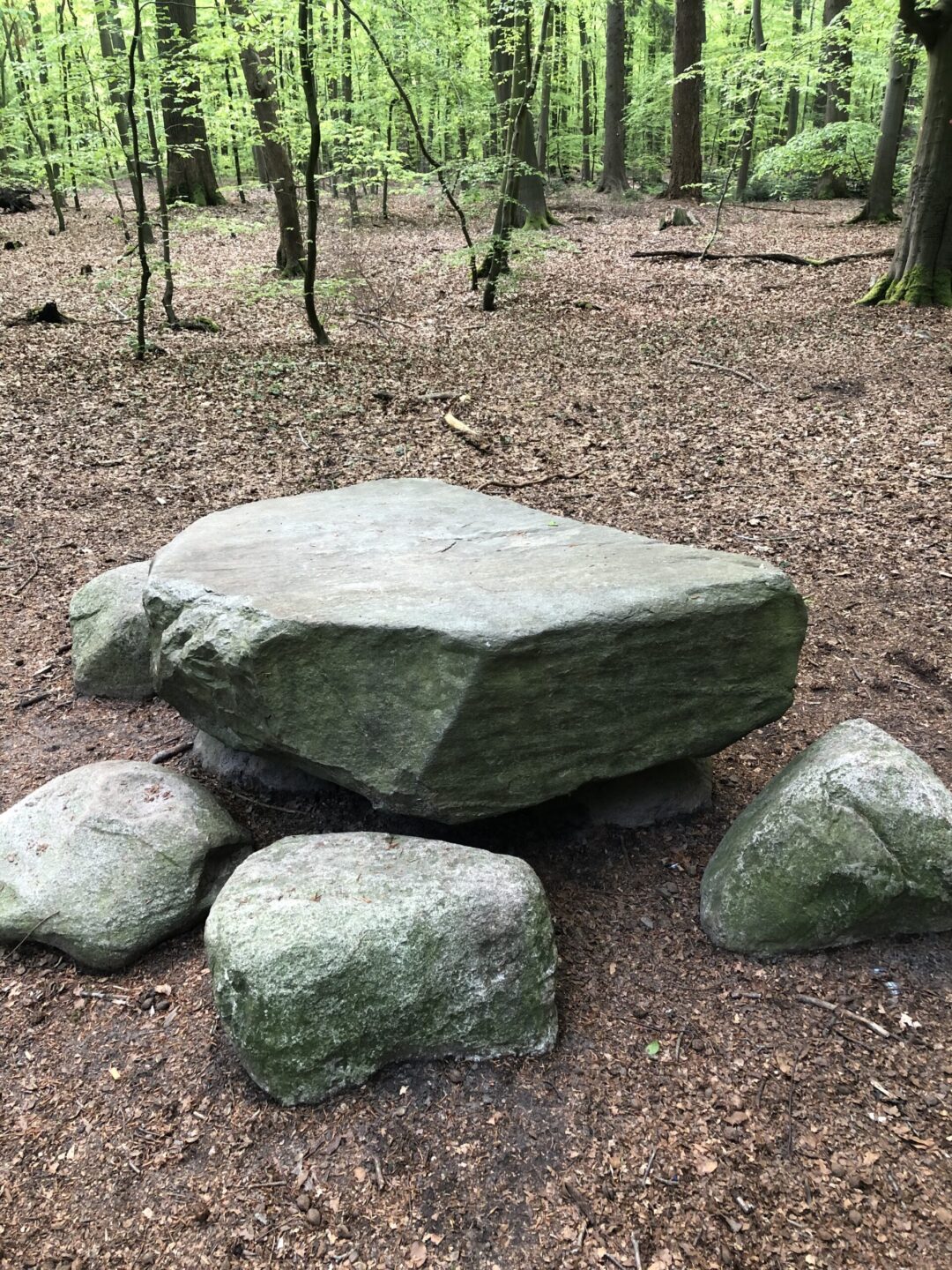Everywhere in the North German plain, there are ancient monuments made of large stones that are stacked on top of each other, the so-called "Hünengräber" or "Hünensteine". For many centuries, these sites have occupied people's imagination. Sometimes it is said that they would be the graves of giants who lived here in ancient times; sometimes, the devil is involved as the author. But sometimes, these motifs are also mixed together by declaring the stones as sacrificial sites of ancient pagan cults or - a little bit more profane - places where sinister fellows would have been up to mischief.
On older hiking maps showing the forest in Rastede, there is a reference to "Zu den Räubersteinen". This refers to some erratic blocks placed like a row of stools around a table.
Let's be honest; the robber stones are not quite as impressive as a real megalithic stone tomb, if only because of their dimensions. There is no reason to assume that we are dealing with a millennia-old "heathen sacrifice table", as the stones are titled in some recent hiking maps.
In fact, we do not know exactly how long these stones have been standing here and who placed them there. But because of their condition, the site is certainly not thousands of years old. Furthermore, we can assume that there was nothing in the palace park of the grand dukes that did not at least enjoy their benevolence.
But let us pretend that this really was a place where robbers or even noble outlaws, similar to Robin Hood in Sherwood Forest, had their meeting place, then this place would suddenly have something very special and fascinating about it. But even if you don't want to let your imagination run wild, the table is always good for a pleasant rest in the countryside!
